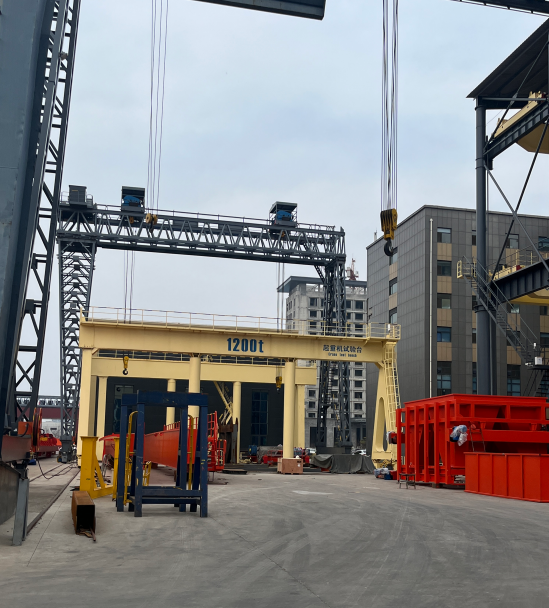Truss Gantry Crane Working Principle and Structural Analysis
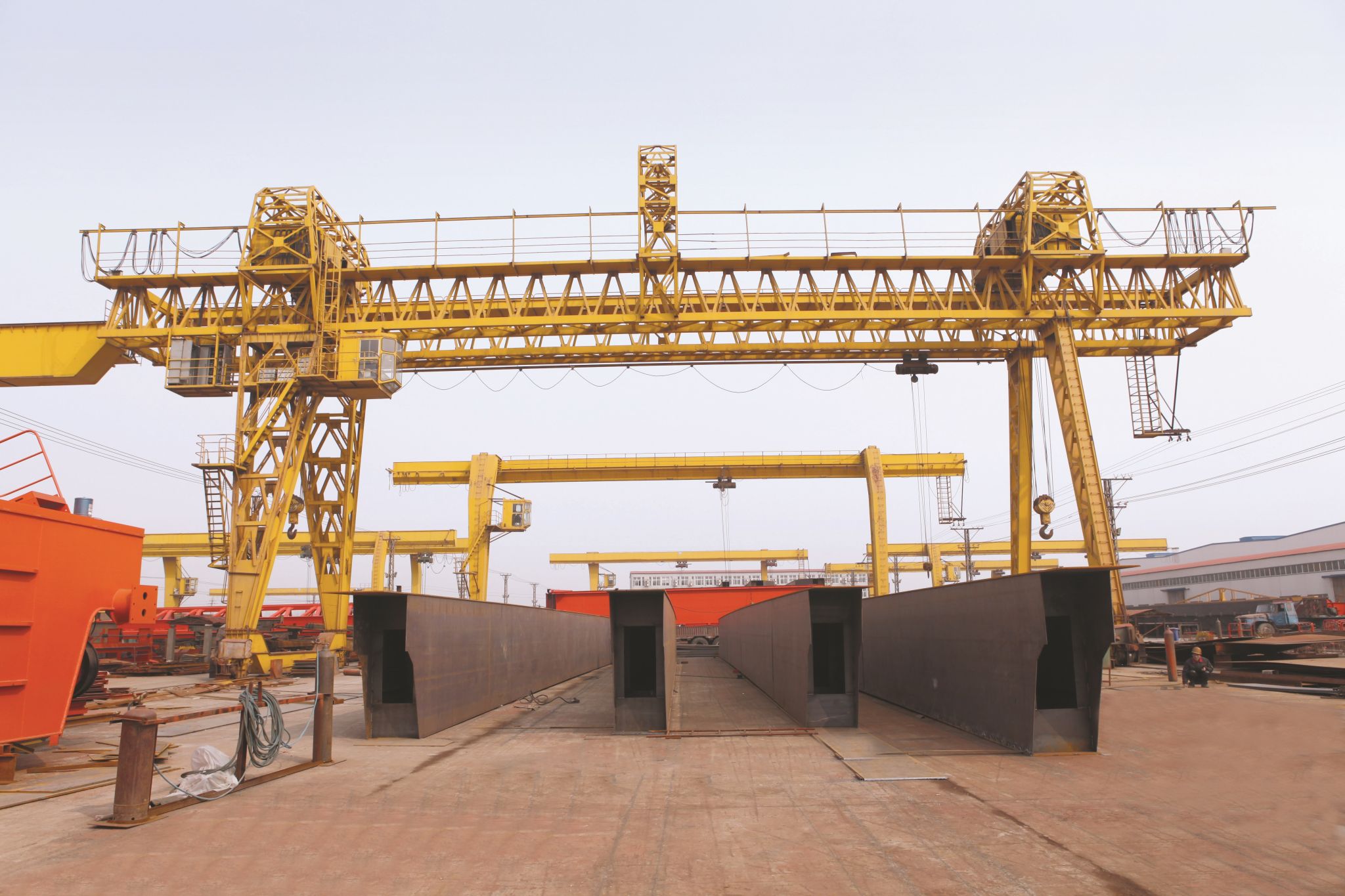
1.1 Basic Structure and Mechanical Logic
The core design of the Truss Gantry Crane is based on a spatial Truss Gantry Crane structure, which consists of a main beam, outrigger, walking mechanism, lifting mechanism, and electrical control system. Its working principle can be summarized as follows:
Main beam truss: Through the truss network composed of triangular units, the load is evenly distributed to achieve a balance between high stiffness and light weight.
Outrigger support: Adopts portal frame design, and walking wheels or track wheels are installed at the bottom of the outrigger to ensure free movement within the span range.
Power transmission: The motor drives the gearbox, and the vertical lifting and horizontal movement of the hook are achieved through wire rope or chain.
Jinghe Technology Highlights: Jinghe Truss Gantry Crane adopts a double web truss design and optimizes node stress distribution through finite element analysis. This reduces weight by 15% compared to traditional structures while increasing torsional strength by 30%, significantly reducing the risk of deformation during long-term use.
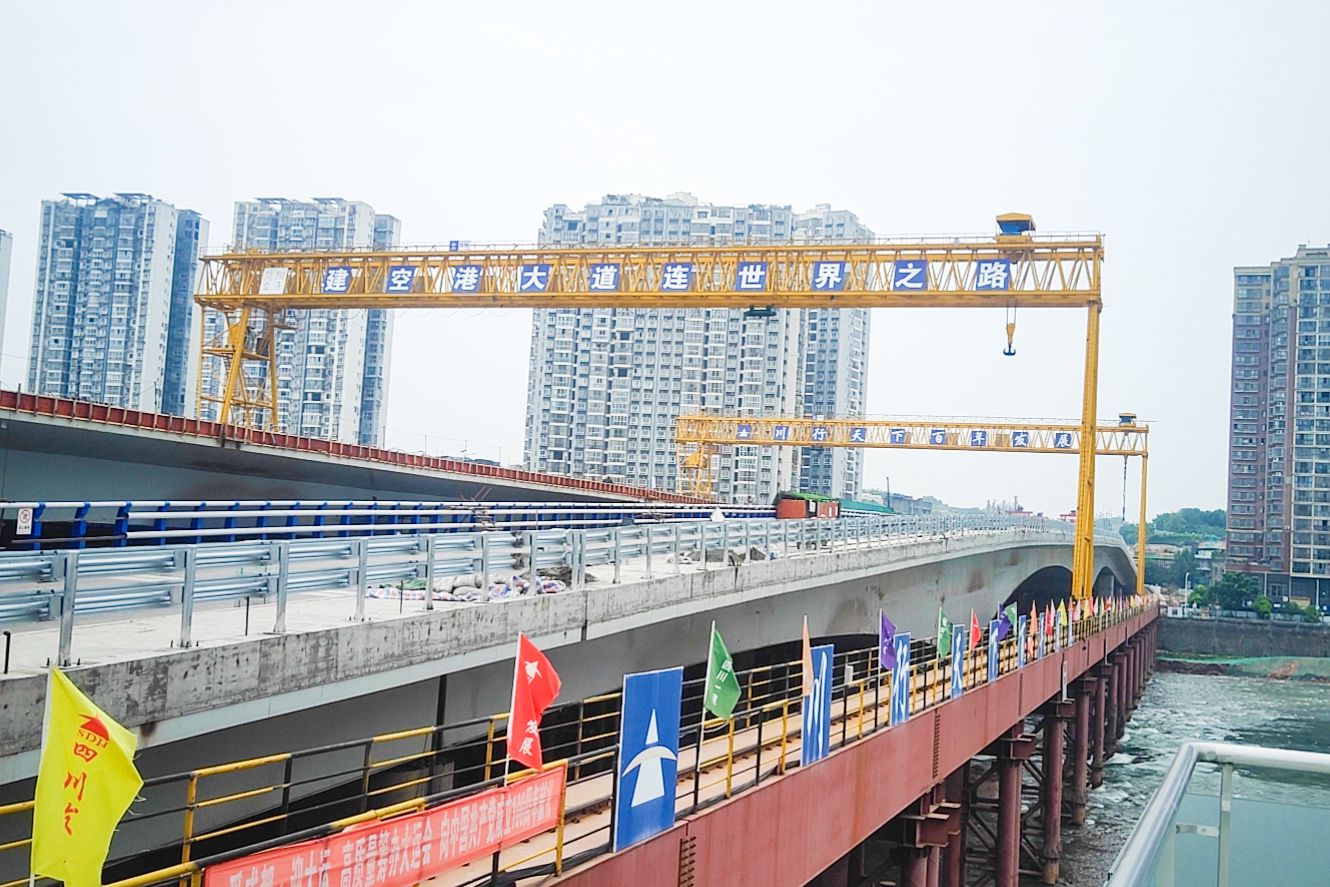
1.2 Load Transfer Path and Stability Control
Static load: The weight is transferred through the sling → wire rope → pulley block → main beam truss → outrigger → ground track, forming a closed-loop transmission chain.
Dynamic load: Wind load, inertial force, etc., are absorbed by dampers and structural stiffness. Jinghe's patented dynamic balance algorithm can adjust motor torque in real time to suppress the swing amplitude of the weight by 50%.
Anti-overturning design: The outrigger is equipped with a pressure sensor and an inclinometer. When the eccentric load exceeds the limit, the system automatically locks the walking mechanism and alarms to ensure safety under extreme working conditions.
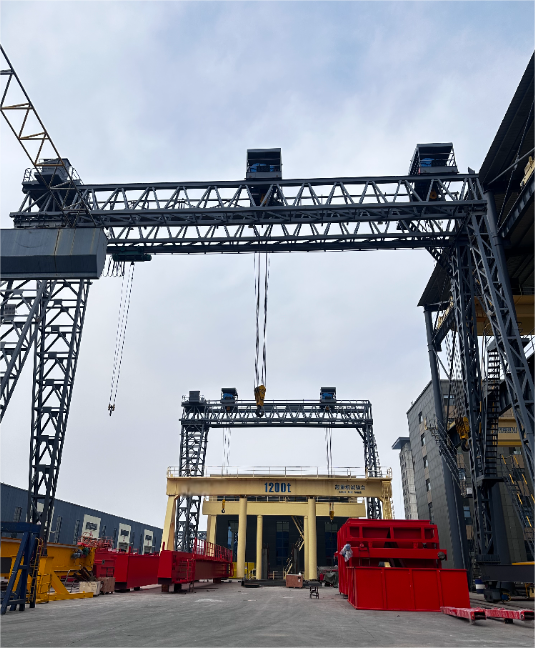
2. Core Technology Breakthrough: Jinghe Crane's Innovative Practice
2.1 Modular Design and Rapid Deployment
Traditional Truss Gantry Crane systems have long installation periods and poor site adaptability. Jinghe has launched a modular Truss Gantry Crane system:
Standardized components: The main beam and outrigger are prefabricated in sections and connected by high-strength bolts, increasing on-site assembly efficiency by 40%.
Scalable span: The span can be flexibly configured from 20 meters to 150 meters, suitable for scenarios such as port container yards and wind turbine blade assembly.
Case: In a port expansion project in Southeast Asia, the Jinghe team completed the installation and commissioning of an 80-meter-span Truss Gantry Crane in just 7 days, helping the customer to put it into operation 3 weeks ahead of schedule.
2.2 Intelligent Control System
Jinghe integrates AI + IoT technology to achieve full life cycle management of Truss Gantry Crane:
Automatic path planning: Based on the weight of the hoist and obstacle distribution, the algorithm generates the optimal moving path, reducing energy consumption by 18%.
Remote monitoring: Through the 5G network, equipment status data is transmitted in real time. The Jinghe cloud platform can predict faults such as bearing wear and wire rope fatigue, shortening maintenance response time to 2 hours.
Human-computer interaction: Equipped with a VR simulation operating system, operators can train in complex working conditions virtually to reduce actual operation risks.
2.3 Green Energy-Saving Technology
In response to the "dual carbon" goal, Jinghe developed a hybrid power system for the Truss Gantry Crane:
Electric drive: Using a permanent magnet synchronous motor, efficiency is 25% higher than traditional asynchronous motors. Combined with regenerative braking energy recovery, comprehensive power saving is 30%.
Solar assistance: Install photovoltaic panels on the top of the Truss Gantry Crane to power auxiliary lighting and sensors, achieving partial energy self-sufficiency.
Case: After a European environmentally friendly port adopted Jinghe electric Truss Gantry Crane, diesel consumption was reduced by 120 tons and carbon emissions by 320 tons per year.
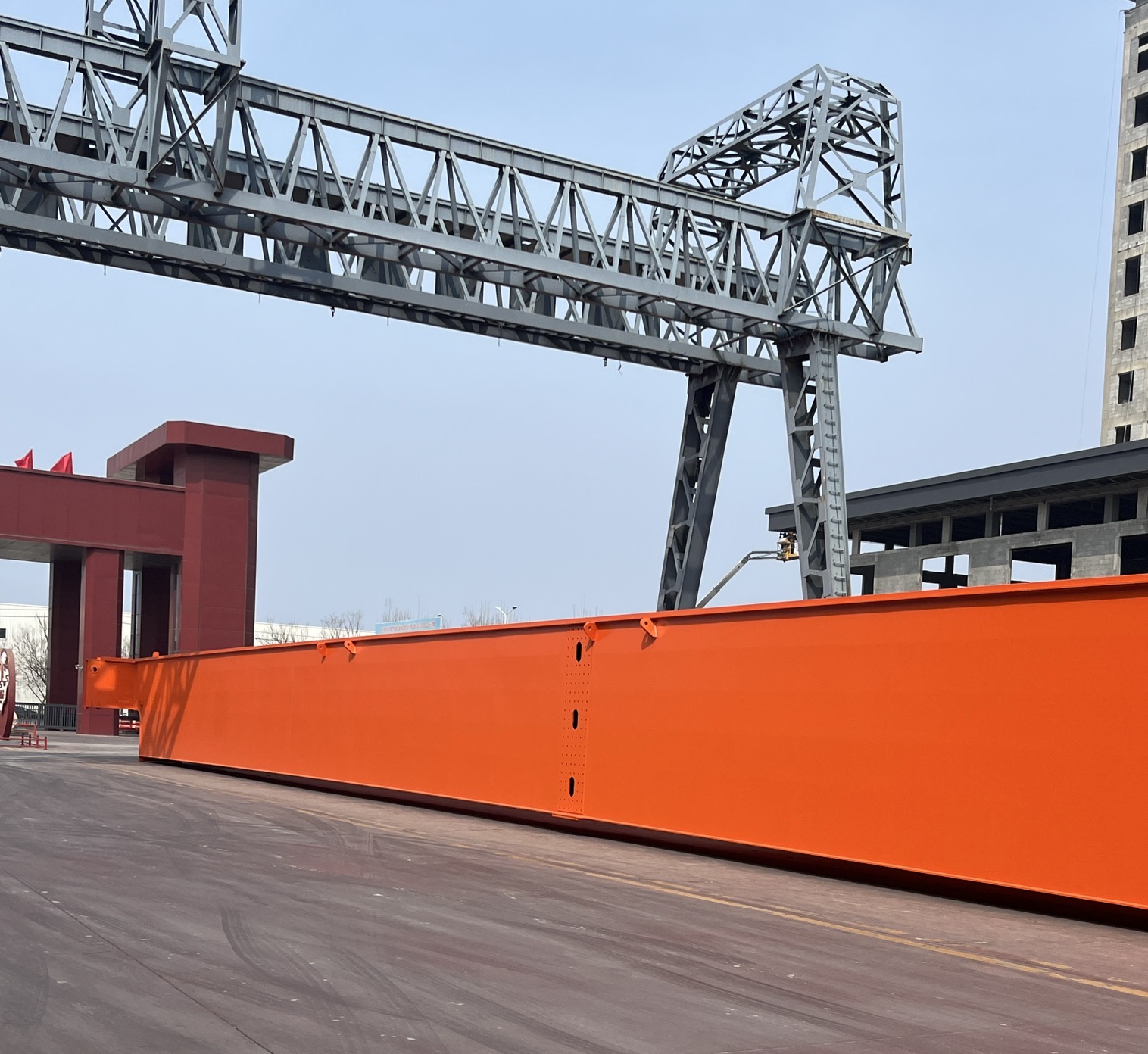
3. Industry Application and Scenario Adaptation
3.1 Port Logistics: Efficient Container Handling
Demand pain point: Container terminals require continuous 24-hour operation, and equipment reliability is crucial.
Jinghe solution: Double trolley design for the Truss Gantry Crane increases operating efficiency to 40 boxes/hour.
Windproof anchoring: Equipped with automatic track clamps and wind speed monitoring, the fuselage can be quickly locked under 10-level wind conditions.
Customer feedback: After a Middle Eastern port used Jinghe Truss Gantry Crane, annual throughput increased by 22%, and failure downtime rate was less than 0.5%.
3.2 New Energy Field: Wind Power Equipment Assembly
Demand pain point: Wind turbine blades exceed 100 meters in length, requiring extremely high hoisting accuracy.
Jinghe solution: Micro-motion control for the Truss Gantry Crane achieves millimeter-level positioning accuracy with a servo motor drive + laser positioning system.
Wind-resistant design: The truss surface is covered with honeycomb deflectors to reduce crosswind resistance by 30%.
Case: A Chinese offshore wind power project uses Jinghe's customized Truss Gantry Crane, shortening the installation period of a single unit to 48 hours.
4. Safety and Reliability: Jinghe’s Core Commitment
4.1 Redundant Safety Design
Dual brake system: Mechanical brake + electromagnetic brake operate independently, allowing safe shutdown even if one system fails.
Overload protection: Real-time monitoring of hoisting weight with automatic power cut-off and sound/light alarm when overloaded by 10%.
Anti-collision system: LiDAR scans obstacles and dynamically adjusts walking speed to avoid collision accidents.
4.2 Full Life Cycle Service
Jinghe provides one-stop service for the Truss Gantry Crane: "design-manufacturing-operation and maintenance."
Design pha: Simulate working conditions using a BIM model and optimize structural solutions.
Manufacturing phase: Use robot welding technology with 100% flaw detection of key welds.
Operation and maintenance phase: Global 48-hour service response and 95% spare parts library coverage rate.
